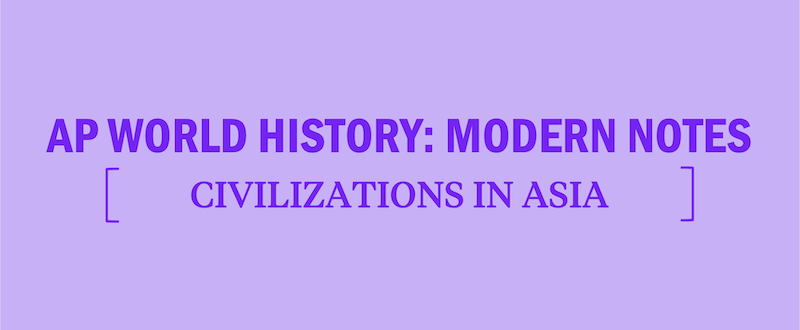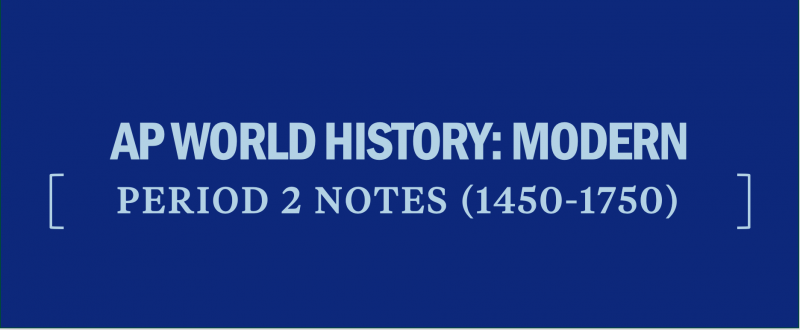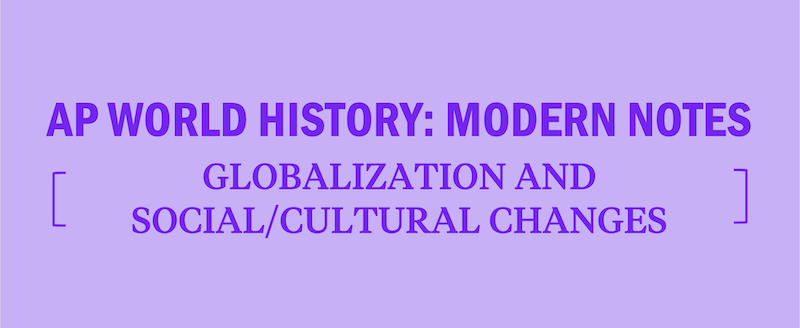How to Approach AP World History: Modern Short-Answer Questions
The short-answer part of the AP World History: Modern Exam, which appears after the multiple-choice questions, consists of four questions—and you must answer three. You have 40 minutes to answer three short-answer questions in Section I, Part B of the exam, which gives you about 13 minutes per question.
Unlike the DBQ and LEQ later in the exam, your response to each short-answer question will be a brief, to-the-point answer to each question’s three required tasks. You should use complete sentences, but there is no need to write a thesis or provide any additional information.
The types of short-answer questions will always be the same:
- Question 1 is based on a secondary source or sources. For instance, you might be asked to provide historical evidence to support or refute a historian’s argument about a historical trend.
- Question 2 is based on a primary source or sources. For instance, you might be asked to explain how a historical image reflects a development in that culture.
- Question 3 and Question 4 do not provide sources and include only the three required tasks. You will choose EITHER Question 3 or Question 4. Question 3 will cover the period from 1200– 1750. Question 4 will cover the period from 1750–2001.
AP World History: Modern Short-Answer Strategy
Before walking through a sample prompt step-by-step, let’s look at some special considerations for short-answer questions:
- Carefully analyze the source stimulus—which could be a passage or image—on questions 1 and 2. Note key details, look for relevant information in the titles and source information, and paraphrase in your own words the main purpose of the source.
- Since each short-answer question consists of three tasks (A, B, and C), read through all three tasks before you begin planning your response. Some tasks may be related to each other (such as providing multiple historical examples), so you want to be sure you have an understanding of all the required tasks before you dive in.
- Short-answer questions do not require a thesis statement or an organized essay response. Directly and concisely address each required task, then move on.
- You will choose EITHER Question 3 or Question 4. Read both questions and consider which one you feel more confident about, keeping in mind that you’ll need to be able to explain each part of your response and provide relevant examples. If needed, quickly begin planning one or both questions to help you determine which question to answer in full.
- You may answer the short-answer questions in any order, as long as you write your responses on the corresponding pages of your response booklet. Begin with whichever question you feel most confident about—be sure you give about a third of your time to each question, since each is weighted the same in your score. The following is a step-by-step walk-through of a sample short-answer question.
Sample AP World History: Modern Short-Answer Question
Use the passage below to answer all parts of the question that follows.
Step 1: Analyze the Prompt
Closely read or analyze the source stimulus, marking important details. When finished, briefly paraphrase the purpose of the source in your own words to solidify your understanding. See a high-scoring response writer’s notes below. Don’t worry about trying to absorb all of the details; focus on the big picture.
¶1: Gothic was held in contempt, author thinks it’s “genius”
¶2: Gothic buildings inspired medieval faith
Look for any additional information that may be provided about the source. For this source, note that the footnote provides a description of Gothic architecture. Here you learn when (the 1100s to 1500s) and how (for cathedrals) the style was used. Finally, the source line indicates that the author wrote about Gothic architecture in 1890, so this is a secondary source.
As you did with the source, read the three parts of the prompt carefully, underlining exactly what each requires. Box, underline, or otherwise mark the action words (which, for this sample prompt, are identify, describe, and explain). Make sure to respond in a way that fulfills what each action word requires.
Step 2: Plan Your Response
The paragraphs below describe what a high-scoring writer might notice and think about when planning a response. Samples of what that high-scoring writer might write as notes are provided for each part of the prompt.
This short-answer prompt contains some underlined words and phrases—pay special attention to these hints. Often, underlines are used when parts of a question test different time periods or have other slightly different requirements, so be careful to keep straight what you need to provide for each part of the prompt.
For Part A, the prompt directs you to the first paragraph and asks for a way in which the author alludes to, or indirectly refers to, a historical development between 1450 and 1750. The high-scoring response writer would research the first paragraph, in which Moore states that in sixteenth-century Italy there was a revival of antiquity and a contempt for Gothic style, and think about what historical development this reflects. Note that the writer only has to briefly identify, not describe or explain, how the author refers to this historical development.
Part A:
- “antique art” = the spread of Classical, Islamic, and Asian ideas in Europe that led to innovations (Renaissance)
Part B requires a description of a function of big architecture between 1200 and 1750 from any world region. The high-scoring writer would note that the passage already mentions how architecture can inspire religious devotion. The high-scoring writer would brainstorm other functions of architecture, choosing one for which she can write multiple descriptive details. Including a specific example would help support the response.
Part B:
- Architecture can legitimize rule (shows wealth, power, divine approval)
- Example: Cuzco temple of the sun (connected ruler w/ deity and utilized large- scale labor)
Part C asks for an explanation of how a political structure in Afro-Eurasia made large-scale architecture possible. The high-scoring writer would brainstorm political structures in Afro-Eurasia and take notes about how she can describe the relationship between those political structures and architecture.
Part C:
- Describe feudal system in Europe: wealth of emerging kings, manor lords, and clergy enabled construction
- Example: St. Peter’s Basilica & Sistine Chapel at Vatican
Step 3: Action! Write Your Response
To form your response, just write out the information, using your planning notes. As you write, remember to label each part of your response (A, B, C) and to keep your writing legible. Refer back to the question’s action words to make sure you’re doing the correct tasks. See the following sample high-scoring response and scoring explanation at the end of this section. One of the best ways to improve your own free-response answers is to read sample responses, thinking carefully about what makes the responses effective and what features you can copy.
Step 4: Proofread
Leave a minute or so for a quick proofread, neatly correcting any errors you catch.
NEXT: How to Approach AP World History: Modern Long Essay Questions







